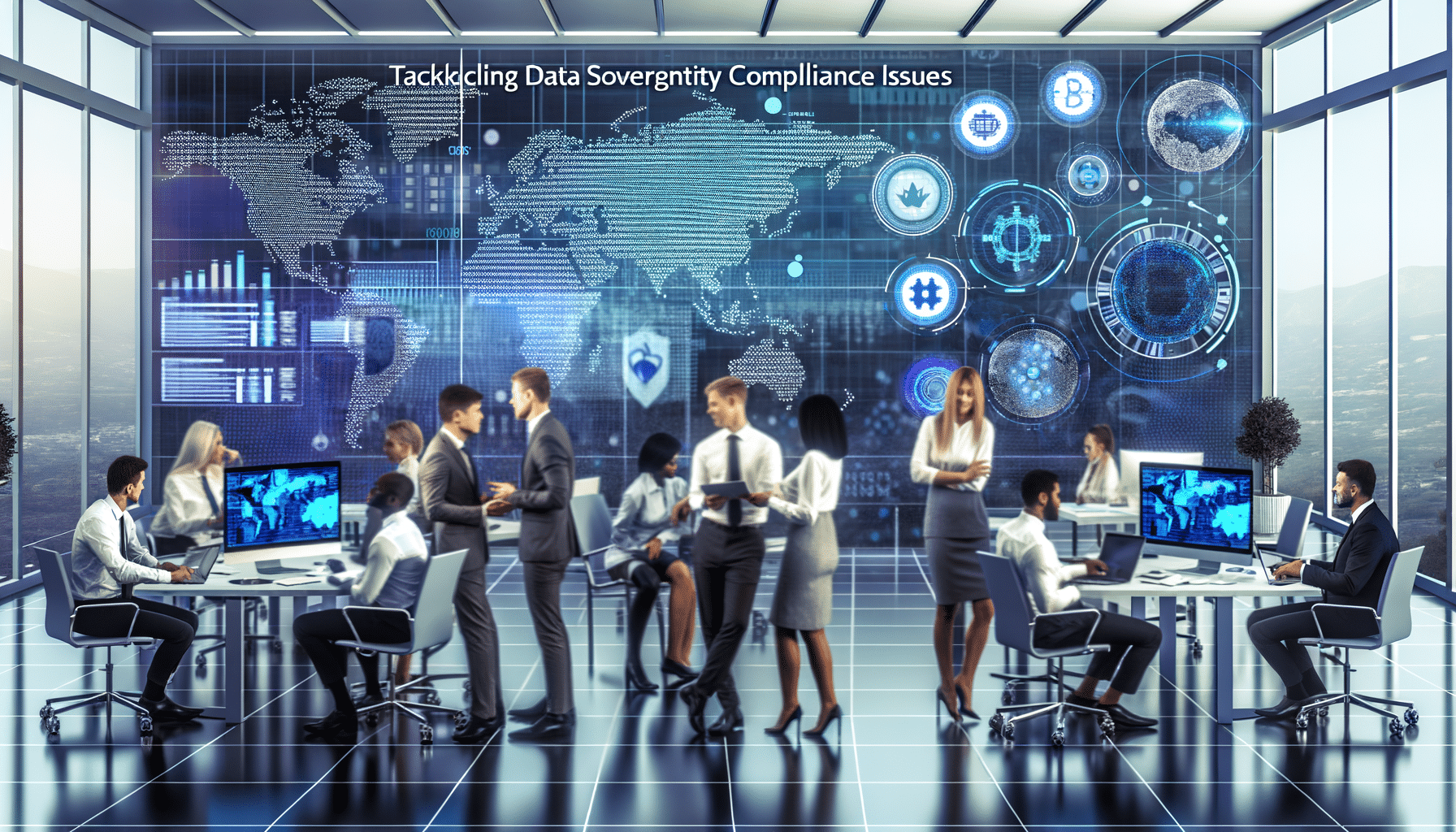- Regulatory
- November 16, 2024
Overcoming Cross-Border Data Compliance Challenges

Introduction
In today’s interconnected world, data doesn’t respect borders. In an attempt to maintain data sovereignty and protect user privacy, nations have crafted an intricate web of compliance standards that organizations must adhere to when handling cross-border data. For companies operating in multiple jurisdictions, these regulations can seem like an insurmountable hurdle. Fortunately, with the advent of technologies such as AI and blockchain, navigating these complexities is becoming more feasible and less daunting.
Understanding Cross-Border Compliance
When we talk about cross-border compliance, we’re referring to the legal and regulatory requirements involved in transferring data across national borders. This involves a plethora of standards and rules that vary significantly from one country to another, such as the General Data Protection Regulation (GDPR) in Europe or the California Consumer Privacy Act (CCPA) in the US. Neglecting to adhere to these regulations can lead to hefty fines and damage an organization’s reputation—so, understanding and implementing compliance measures is crucial.
The Challenges of Cross-Border Data Management
Coping with cross-border compliance challenges is no small feat. A significant hurdle lies in the diversity and complexity of international data regulations. Not only do these regulations differ from country to country, but they are also continuously evolving. Keeping abreast of these changes and managing international data flows within these frameworks demands a strategic approach.
Another considerable challenge is the security and integrity of data. As data traverses different geographic locations, it becomes vulnerable to breaches and fraud. Maintaining the integrity and confidentiality of data is non-negotiable in ensuring compliance and trust.
Leveraging AI and Blockchain for Compliance
This is where AI and blockchain technologies come into the spotlight. They provide innovative solutions to streamline and secure cross-border data management. At RecordsKeeper.AI, we harness these technologies to overcome compliance challenges efficiently and securely.
AI for Automating Compliance
AI can revolutionize how businesses comply with data regulations across borders. By using automated tools, AI continuously monitors and analyzes data flows, flags non-compliance risks, and ensures that regulatory standards are met. AI algorithms are adept at learning and evolving, providing real-time insights and predictive analytics, which are invaluable in managing data compliance proactively.
Moreover, AI’s ability to automatically categorize and retrieve data ensures not only efficiency but also reduces human error, a common compliance pitfall. By employing natural language queries, locating necessary documents becomes a breeze, freeing valuable time and resources that can be better utilized elsewhere.
Blockchain for Enhancing Data Integrity
The integration of blockchain technology provides an unparalleled level of transparency and security in data management. Blockchain’s decentralization means data is not stored in one location, reducing vulnerability to attacks. Its immutable nature guarantees untamperable records, offering a reliable audit trail for compliance officers and regulators.
By time-stamping every transaction in a tamper-proof ledger, blockchain reassures international authorities of data integrity, thereby satisfying one of the core requisites of cross-border compliance.
The Strategic Advantage of AI and Blockchain
The combination of AI and blockchain doesn’t just simplify compliance—it transforms it into a strategic advantage. By automating and securing data processes, organizations can focus on what truly matters: growth, innovation, and customer satisfaction. Implementing these technologies not only mitigates the risks but also minimizes the costs associated with compliance, presenting businesses with a clearer pathway to scaling internationally.
Practical Steps to Implement These Technologies
- Assess Current Data Management Practices: Understand your current systems and evaluate areas where AI and blockchain can be integrated.
- Invest in Training: Equip your teams with the necessary skills and understanding to utilize these technologies effectively.
- Partner with Experts: Engage with specialists who offer tailored solutions and provide guidance through the implementation process.
- Monitor and Iterate: Use feedback and analytics to continuously refine your compliance strategy.
Conclusion
Overcoming cross-border data compliance challenges is a daunting task, but not an impossible one. By integrating AI and blockchain into your data management practices, you can not only meet international compliance requirements but set your organization up for success in the global arena. As the founder of RecordsKeeper.AI, I am passionate about guiding businesses through this transformation, ensuring they stay compliant while capitalizing on the vast potential of their data assets.
To learn more about how RecordsKeeper.AI can help navigate your cross-border compliance challenges, I invite you to connect with me and explore our resources aimed at enhancing legal and compliance strategies.
Toshendra Sharma is the visionary founder and CEO of RecordsKeeper.AI, spearheading the fusion of AI and blockchain to redefine enterprise record management. With a groundbreaking approach to solving complex business challenges, Toshendra combines deep expertise in blockchain and artificial intelligence with an acute understanding of enterprise compliance and security needs.
Related Posts

Managing Complex Regulatory Documentation Requirements
Simplifying complex regulatory documentation with AI automation.
- November 16, 2024

Tackling Data Sovereignty Compliance Issues
Managing data sovereignty requirements with AI and blockchain.
- November 16, 2024
Archives
- January 2025
- December 2024
- November 2024
- October 2024
- September 2024
- August 2024
- July 2024
- June 2024
- May 2024
- April 2024
- March 2024
- February 2024
- January 2024
- December 2023
- November 2023
- October 2023
- September 2023
- August 2023
- July 2023
- June 2023
- May 2023
- April 2023
- March 2023
- February 2023
- January 2023
- December 2022
- November 2022
- October 2022
- September 2022
Want to get more content like this?
Signup to directly get this type of content to your inbox!!
Latest Post
Document Control for Equipment Maintenance
- January 20, 2025
Managing Records for Multiple Clients
- January 19, 2025
Handling Conference Documentation
- January 18, 2025
Setting Up Department Record Reviews
- January 17, 2025





